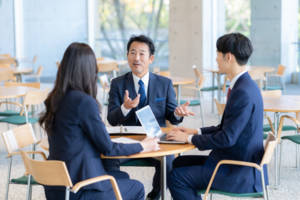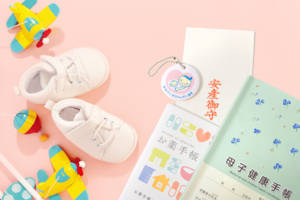Attending A Japanese Wedding
Friday, October 11, 2019
All the things you need to know to avoid faux pas at a Japanese wedding

Wedding etiquette can be tricky regardless of whether you’re a guest or the host. Invited to a Japanese wedding and don’t know where to start? Planning your own and have no idea how a Japanese wedding compares to weddings in your home country? Here are some guidelines:
Selecting a day:
Lucky days according to the almanac are popular days for weddings. The Japanese calendar follows the Chinese calendar system of rokuyo (六曜), or a series of six days that predict good or bad fortune. Though not a significant part of everyday life, days that are marked as Taian (大安) are considered the luckiest days and are best for weddings and special events. On the contrary, butsumetsu (仏滅)the unluckiest day, should be avoided for weddings.
RSVP
You will receive a RSVP card with your invitation, and you’re expected to respond regardless of whether you can attend the wedding or not. Keep in mind, only the person who is invited should RSVP and attend the event. There is no +1 or option to bring a guest like there may be for weddings in other cultures.

What to wear (as a guest)
Erring on the side of formal is safer. Similar to other countries, you shouldn’t wear white, as that’s the color of the bride and you don’t want to stand out unnecessarily. Nothing too revealing or short, a simple dress with jewelry and closed high heels would work well for women. If you’re wearing a dress that shows your shoulders, bring a shawl to cover them during the ceremony. If you want to wear a kimono, make sure you wear the right one: furisode (振袖、kimono with long sleeves and vibrant colors) are for unmarried women and homongi (訪問着、kimono with short sleeves in more muted colors) are generally for married women. For men, a standard suit and tie is fine, though again you should steer clear of a white suit.
What to gift
Only one type of gift is customary, and it’s money. This might sound off-putting to cultures used to gift registries and giving or receiving household items, but the concept of a money gift, or goshugi (ご祝儀) is deeply rooted in the culture, and it helps newlyweds with their wedding costs. Instead of setting up a registry and getting a slew of pots and pans, the cash gift will help the couple to start their newlife together. You can buy special designated envelopes, or goshugi-bukuro (ご祝儀袋), at a stationary store, recognizable with a particularly festive design and decorated and tied with strings called mizuhiki (水引).
Now you will have to decide the amount of money you want to give. It’s important to give an amount that’s an odd number, as it’s bad luck to give them ¥20,000 or ¥40,000, an even number can be divided and it’s as if you’re wishing for them to split.

Though there may be regional differences, the average amount for friends and colleagues is ¥30,000. If you’re the boss of the person getting married, if it’s a family wedding, or if you’re attending with your partner, you may want to give ¥50,000 or more. Also, make sure the bills you give are crisp, new bills without folds or stains from previous use. Withdraw them at the bank for this purpose, make sure to write your name on your envelope and bring them to the wedding. Don’t hand the envelope directly to the couple, but leave it with the receptionists at the wedding who will make sure that it gets to the couple.
The ceremony, or shiki (式)
There are a few types of common wedding ceremonies in Japan, with two being the most popular. The actual wedding ceremony is a private affair and only for a smaller group of family and close friends, with the reception reserved for a wider audience.
The first type of wedding ceremony and the most popular is the “white” wedding, a loosely Christian-style wedding held in a church. This became popular with the 1981 TV broadcast of the wedding of Prince Charles and Lady Diana. Though Christians make up only about 1 percent of Japan’s population, according to the Cultural Affairs Agency, about two-thirds of Japanese unions are Christian style-weddings. In most cases, neither the participants nor the venues consider these weddings to be much about the religion, but rather an opportunity to wear a white wedding dress or tuxedo and walk the wedding aisle, or the “virgin road.” These ceremonies are generally officiated by a Caucasian male who may or may not be an ordained priest. The allure of a Christian-style wedding is about the image and not about the congregation, as Japan even has the creed, “Born Shinto, live nonreligious, wed Christian and die Buddhist.”
The second type of ceremony is the traditional Shinto-style wedding, held in a Shinto shrine with an attending priest. This type of wedding was introduced to Japan when Crown Prince Yoshihito (the Taisho emperor) married via a Shinto wedding in 1990. The bride will wear a traditional all-white kimono called shiromuku (白無垢).
Instead of a veil, the bride will wear a headdress called the wataboshi (綿帽子)which is similarly meant to conceal the bride’s face to everyone except the groom, or the tsunokakushi (角隠し)meaning “horn-hiding” which is said to veil the bride’s horns of jealousy, ego, and selfishness. It’s supposed to symbolize the bride’s intent to become a gentle and obedient wife. The color “white” is thought to be flexible as it could be dyed any color, so wearing the shiromuku means that the bride is ready to be dyed the color of the groom. As for the groom, he will wear a black kimono called montsuki (紋付). He will also wear a type of jacket called haori (羽織)and special pants called hakama (袴).

This type of ceremony focuses on themes of purification. The priest purifies the shrine and calls the kami, or the divine spirits. The couple are guided through san-san-kudo (三三九度), a ritual involving the exchange of sake between the couple. At the altar, the groom will read his vows. Reflecting a history of arranged marriages in Japan, a nakodo (仲人), or a matchmaker will be thanked in the vows. If there is no matchmaker, a friend or a family member will fill the role, similar to a member of the bridal party in a Western wedding. Then the families will join in with the drinking of the sake.
Finally, the priest will offer Japanese evergreen to the altar, to reflect with gratitude for the spirits who blessed the union. The bride and groom follow with their own offering, then a representative from each family, and then the rings are presented.
During the wedding prayers, the gods Izanagi and Izanami, married gods who are central to the Shinto creation myth, are called to reflect a harmonious balance within the marriage.
The reception, or hiroen (披露宴)
Receptions are often held in hotel convention rooms or banquet halls with a head table that seats only the bride and groom. The party will start on time and follow a schedule, beginning with the entrance of the bride and groom. They will have changed into different clothes, perhaps a Western-style tuxedo and white wedding dress, or a brightly colored kimono or gown. There may be multiple intermissions throughout the wedding where the bride and groom leave their seats for an outfit change, or oironaoshi (お色直し).
There will be a series of speeches by guests, often by friends and family but also the groom and/or bride’s boss. Usually there will also be singing or skits and other forms of entertainment, and the couple may play a self-made video of their history together. Often the bride will give a thank-you speech to her parents, which can be a real tear-jerker.
When it’s wrapping up...
As you’re leaving the wedding, don’t forget about the wedding favors! There should be a present from the couple at your table, which is called the hikidemono (引き出物). It’s often sweets or small decorative objects such as hand towels or tableware. Sometimes guests will be provided a gift catalogue and they can choose their desired party favor. Don’t linger too long if you see the couple and their parents in a line by the exit, they’re waiting to say goodbye and thank you for coming.
At the ceremony and reception, there won’t be any dancing, which may be surprising to those who are accustomed to weddings that go on late into the night with guests on the dance floor. Often times Japanese couples will choose to have an after party or a nijikai (二次会) though, which will involve a smaller group of the bride and groom’s closest friends and generally a younger crowd. The after party would be held at a different venue and may involve dancing, more drinking, and karaoke with an additional cost to attend. Also, if you’re still standing after all the festivities, you might want to continue on to the after-after-party or the sanjikai (三次会) to keep the party going.
----------------------------------------------
About the Author

Writer, content design strategist, and Kansai-jin.








